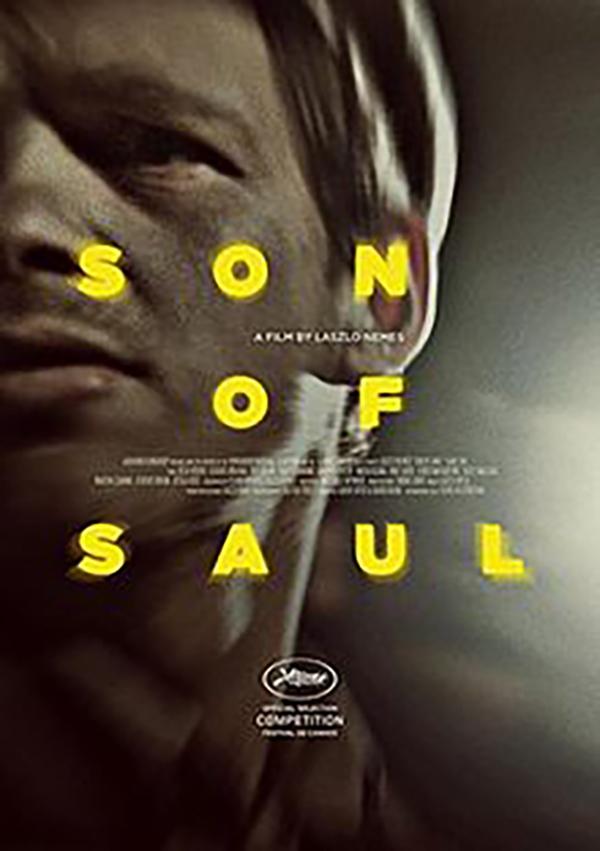‘Son of Saul’ captures hell on screen
Son of Saul is a 2015 Hungarian drama film, where a Hungarian-Jewish prisoner in Auschwitz works as a Sonderkommando member, burning the dead, during the Holocaust.
October 15, 2015
The brutal horror of László Nemes’ “Son of Saul” opens with a serene image of unfocused greenery and birds chirping in the background. Saul (Géza Röhrig) steps into focus, a man with deep facial contours that express more loss than life. Seconds later, a flurry of meek, confused people step off a train and Saul mechanically guides them into a building. They are humiliated, stripped and herded into a windowless box and Saul shuts the door. He holds against it, hearing hundreds pound and scream as gas fills the chamber.
This is Auschwitz. It is death and it is all that consumes what is left of Saul’s existence. Saul is a Sonderkommando, a Jewish prisoner forced to work with Nazi soldiers to clean up the dead from gas chambers until he himself is to be executed. From the batch of bodies, Saul finds his son, who is still alive until a Nazi doctor strangles him. Saul immediately becomes compelled to find a Rabbi and offer his boy a proper burial, which sets the premise of the tragic film.
The camera follows the journey by rarely leaving Saul’s side, capturing his movements and leaving anything off-camera out of focus, stringing together astounding long takes. Bits of naked, mutilated bodies poke into the corner of the screen, piled up chest high. The muted visuals are intense and immersive, steeping the viewer in confusion and terror. The technique also translates Saul’s own psyche, tuning out the perverse surroundings so as to permit his own survival. It’s ignored, persistent static to him, until focus is gained upon sight of his boy.
Nemes uses this spiritual endeavor to intelligently capture the Holocaust like never before. It’s small and personal, yet encompasses all of the inconceivable death that larger projects make bloated. Saul’s persistence leads him throughout much of the camp, serving as a terse tour that shows its many moving parts, from the crematorium to the shoveling of ash into a river. It’s a demonic factory whose groans act as undercurrent for the film’s continual atrocities. There is no score for the film, as there is no music to complement death.
Röhrig is a visual force. Saul is so stout and ungainly that Röhrig’s expressions are limited mostly to his eyes. Nevertheless, he uses a mixture of anger, destitution and stubbornness to create a palette of emotional complexity. The very fact that he keeps a grip on himself amongst a firestorm of draining sequences is astounding.
The most awful portion takes place as Saul plunges into a mass execution in hopes of finding a Rabbi. The visuals translate a nightmare, and it must have been one to shoot for cinematographer Mátyás Erdély. Saul still remains in full focus, yet the off screen funneling of mass execution isn’t missed. It’s there in all its horror; it’s hell on screen.
The film opens theatrically on December 18 in NY (Film Forum and Lincoln Plaza) and LA.
Email Ethan Sapienza at [email protected].




























































































































































